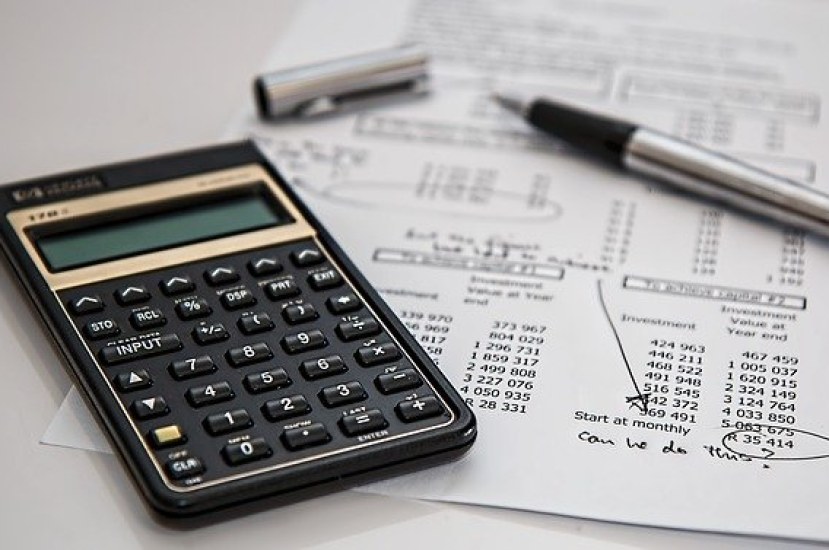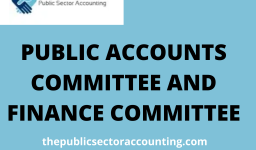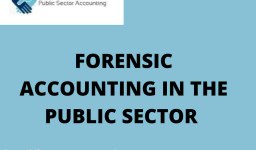PUBLIC SECTOR ACCOUNTING: BUDGETING IN THE CENTRAL GOVERNMENT
Central Government Budgeting Process Central government budgeting process follows the general budget cycle. It begins with budget preparation and submission, approval, implementation/execution and monitoring, audit and evaluation.
The discussions in this section follow similar discussions by Oduro (2014)
Preparation/ Budget Formulation This is the stage at which the budget is created. It begins with the public expenditure survey. Public Expenditure Survey (PES): undertaken to assess the effect of government expenditure on government resources and future plans
Objectives of PES
Plan government programmes within available resources.
Ensure efficient and effective rationalisation of resources.
Coordination of various sectors and their expenditure
Determine the level of expenditure to be allocated to various sectors Budget Committee: Head of Department (Chairperson), Head of Budget Management Centre, Budget Officer Responsibilities of the Budget Committee Review and formulation of the strategic plan
Review of revenue collecting activities
Allocation of resources based on objectives
Coordination and consolidation of budget
Monitor and evaluate budget performance
Reporting
Step 1: Issue of policy Paper or Budget Framework Paper.
Developed by Central Budget Agency (CBA) under MoF not later than 8 months before the end of each year.
Contains draft preliminary constraints, revenue and expenditure projections for the next year budget.
It should reflect the nation’s development plan and PES
Submitted to Cabinet for discussion
Step 2: Cabinet Provisional Discussion Major content such as expenditure, new taxes
Cabinet communicates its position to the CBA
Step 3: Issue of Budget Circular by CBA
Guidelines for spending organisations to follow in making their spending plan and request
Not later than 6 months before the end of each year. Content of budget circular Timetable for preparation and submission of governments macroeconomic policy statement and budget estimates
Commentary on past economic conditions
The projected growth rate for sectors and the country as a whole Some macroeconomic variables highlights
Specification of sectorial and ministerial constraints.
Step 4: Issue of Budget Instructions
Minister of Finance then issues additional guidelines and directives to MDAs (HoDs) on how to carry out the budget preparation.
Content of the Budget Instructions: a form of budgetary documents and statement; classification of the budgetary transaction; information to be submitted in support of budgetary proposal; costing of activities; procedure to be followed by the budget committee in preparing, submitting and implementing the budget
Step 5: Preparation and submission of budget proposal Revenue Budget (Consolidated Fund Revenue): Tax revenue, Non-tax revenue, Grants, Loans
Expenditure Budget (Consolidated Fund Expenditure). ◦ Consider macroeconomic framework, government resources, ceiling approved by the cabinet, strategic plan, etc ◦ Perform internal budget hearing for sections within the MDAs. Authorisation and Approval Stage of the Central Budget Process
Authorisation generally occurs at the departmental and ministerial levels whereas approval occurs at cabinet and parliament. Procedures for Approving Government Budget
Step 6: Examination of Budget Proposals – happens at the CBA. Budget examiners check for agreement or query based on the budget ceiling in the circular.
Step 7: Budget Hearing (External Budget Hearing)
- CBA conducts by comparing estimates with strategic plans. Adjustments may be suggested.
- Spending officers can appeal to Cabinet on disagreements.
Step 8: Cabinet Approval (Budget officer to Finance Minister and to Cabinet)
Step 9: Preparation of Finance and Appropriation Bills.
Step 10: Revenue Collection. Passage of Finance Bill under Certificate of Urgency for revenue collection to begin the first day.
Step 11: Examination and Approval of expenditure estimates.
◦ Relevant sub-committees of parliament do the budget examination
◦ Parliament sits as appropriation Committee and approves budget
Implementation and Executory Stage
Step 12: Provisional Appropriation Act
- Provisional Warrant to authorize spending.
Step 13: Release of funds to meet expenditure.
- MoF issues a general warrant for compensation and specific warrant for goods, services and investment activities to the Controller and Accountant General (CAG) • CAG issues spending unit warrant to Heads of spending organizations.
- Heads lodge spending unit warrant with their Treasuries A warrant is an order drawn authorizing payment to a designated payee Audit and Evaluation Stage
This is the stage where the budget implementation is subjected to constant review in order to ensure that spending is covered by the budget and amount spent on does not go beyond what has been budgeted.
Internal and external audit functions play a critical role in the audit and evaluation state of the audit.
BUDGETING IN THE LOCAL GOVERNMENT
Dear Learner, you are welcome to the last session of Unit 2.
After going through the budgetary process for central government, we know by now you will be wondering whether the same process is applied to District Assemblies. So, we end Unit 2 with a discussion of the budgeting process in the local government setting.
In other words, we try to answer the question:
how is budgeting done in the Metropolitans, Municipalities, and District Assemblies?
Objectives
By the end of this session, you should be able to outline and discuss the various stages followed in preparing budgets for the local government.
Now you can read on…
Introduction
The budgeting process of the District Assemblies is captured under sections 122 to 124 of the Local Government Act 2016 (Act 936). But we shall begin by briefly looking at the administration of the District Assembly. Functions of District Assembly 12.
(1) A District Assembly shall
(a) exercise political and administrative authority in the district;
(b) promote local economic development; and
(c) provide guidance, give direction to and supervise other administrative authorities in the district as may be prescribed by law.
(2) A District Assembly shall exercise deliberative, legislative and executive functions.
(3) Without limiting subsections (1) and (2), a District Assembly shall
(a) be responsible for the overall development of the district;
(b) formulate and execute plans, programmes and strategies for the effective mobilisation of the resources necessary for the overall development of the district;
(c) promote and support productive activity and social development in the district and remove any obstacles to initiative and development;
(d) sponsor the education of students from the district to fill particular manpower needs of the district especially in the social sectors of education and health, making sure that the sponsorship is fairly and equitably balanced between male and female students;
(e) initiate programs for the development of basic infrastructure and provide municipal works and services in the district;
(f) be responsible for the development, improvement and management of human settlements and the environment in the district;
(g) in co-operation with the appropriate national and local security agencies, be responsible for the maintenance of security and public safety in the district;
(h) ensure ready access to courts in the district for the promotion of justice;
(i) act to preserve and promote the cultural heritage within the district;
(j) initiate, sponsor or carry out studies that may be necessary for the discharge of any of the duties conferred by this Act or any other enactment; and (k) perform any other functions that may be provided under another enactment.
(4) A District Assembly shall take the steps and measures that are necessary and expedient to
(a) execute approved development plans for the district;
(b) guide, encourage and support sub-district local structures, public agencies and local communities to perform their functions in the execution of approved development plans;
(c) initiate and encourage joint participation with other persons or bodies to execute approved development plans;
(d) promote or encourage other persons or bodies to undertake projects under approved development plans; and
(e) monitor the execution of projects under approved development plans and assess and evaluate their impact on the development of the district and national economy in accordance with government policy.
(5) A District Assembly shall co-ordinate, integrate and harmonies the execution of programs and projects under approved development plans for the district and other development programs promoted or carried out by Ministries, Departments, public corporations and other statutory bodies and non-governmental organizations in the district.
(6) A District Assembly in the discharge of its duties shall
(a) be subject to the general guidance and direction of the President on matters of national policy; and
(b) act in co-operation with the appropriate public corporation, statutory body or non-governmental organization.
(7) Public corporations, statutory bodies and non-governmental organizations shall cooperate with a District Assembly in the performance of their functions.
(8) In the event of a conflict between a District Assembly and an agency of the central Government, public corporation, statutory body, non-governmental organization or individual over the application of subsection (5), (6) or (7), the matter shall be referred by either or both parties to the Regional Co-coordinating Council for resolution.
(9) The Instrument that establishes a particular District Assembly or any other Instrument, may confer additional functions on the District Assembly.
Executive Committee of District Assembly 19.
(1) There shall be established an Executive Committee of a District Assembly to be responsible for the performance of the executive functions of the District Assembly.
(2) An Executive Committee shall consist of
(a) the District Chief Executive as chairperson;
(b) the chairpersons of the following Sub-Committees of the Executive Committee (i) Development Planning,
(ii) Social Services,
(iii) Works, (iv) Justice and Security, and
(v) Finance and Administration;
(c) the chairperson of one ad hoc Sub-Committee of the Executive Committee elected by the District Assembly, and
(d) any two other members elected by members of the District Assembly, at least one of whom is a woman.
(3) The Secretary of the District Assembly shall be the Secretary of the Executive Committee. District budget 122. The budget for a District Assembly shall comprise
(a) the aggregate revenue and expenditure of the Office of the District Assembly, the Departments of the District Assembly; and
(b) the budget for the annual development plans and programmes of the Departments of the District Assembly.
Submission of budget estimates 123.
(1) Each District Assembly is responsible for the preparation, administration and control of the budgetary allocation of the Office of the District Assembly and the Departments of the District Assembly.
(2) Each District Assembly shall before the end of each financial year, submit to the Regional Co-ordinating Councils, the detailed budget for the respective district that states the estimated revenue and expenditure of the District Assembly for the ensuing year.
(3) The Regional Co-ordinating Council shall collate and coordinate the budgets for the districts in the region and shall submit same to the Minister responsible for Finance.
Revenue of District Assemblies 124.
(1) The revenues of a District Assembly comprise
(a) decentralised transfers;
(b) internally generated funds; and
(c) donations and grants.
(2) Decentralised transfers comprise funds from the following revenue sources: (a) the District Assemblies Common Fund;
(b) grants-in-aid from the central government; and
(c) any other revenue transferred from the central Government to the District Assembly.
(3) Internally generated funds comprise funds from the following sources:
(a) licences;
(b) fees and miscellaneous charges;
(c) taxes;
(d) investment income; and
(e) rates
(4) A District Assembly shall open and maintain a bank account for revenues and other money raised or received by it.
(5) A District Assembly may borrow to finance projects in accordance with relevant laws.
(6) For the purposes of this section “grants” means donations being funds paid directly to a District Assembly by a development partner.





Leave a comment